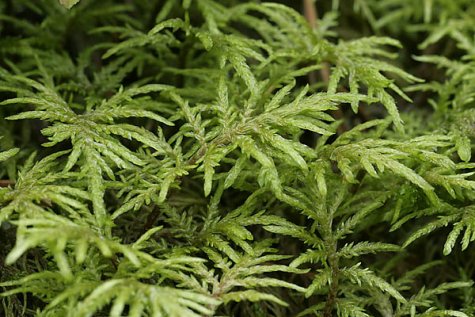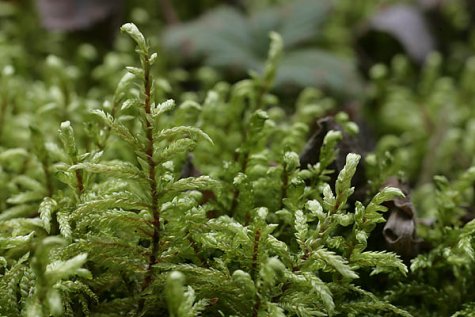Eye-catching: modest mosses
Photos: Arne Ader
Translation: Liis
Stair-step moss
Stair-step moss; Glittering wood moss; Mountain-fern moss Harilik laanik Hylocomium splendens
Schreber's moss; Redstem feather moss; Big redstem Harilik palusammal Pleurozium schreberi
Stair-step moss is a quite common moss species, growing in fresh as well as dry boreal forests. It prefers a bilberry environment with a moister and shadier habitat than the Schreber’s moss that grows with lingonberries. Thus their habitats are split more or less amicably. Sometimes the two mosses grow so closely together that it is difficult to distinguish them at a first glance: even the heights are similar, 10 to 15 centimetres.
The stems of the stair-step moss are branched into mutliple side stems, these stems are located in layers and have more pointed tips than the Schreber’s moss. The matte olive green moss carpet looks finely patterned and airy. The stems of the Schreber’s moss are currently dark red, resembling small spruces, slightly shiny and with tapered branch tips.
Fresh boreal forests are more prevalent in South Estonia. In the tree layer silver birches (Betula pendula) and pines grow in addition to spruces. In the bush layer we find hazels, willow and rowan. In the shrub layer bilberry, lingonberry, heather.
The Estonian name for the dry boreal forests that the Schreber's moss prefers, palumets, comes from lingonberry, Vaccinium vitis-idaea, palukas or pohla in Estonian. They are dry, light pine forests with moderately moist soils – such forests cover almost 10% of our forest areas.
Schreber's moss










